A Journey into Tradition, Heritage, and Modernity
Introduction: Rajasthan – A Cultural Mosaic
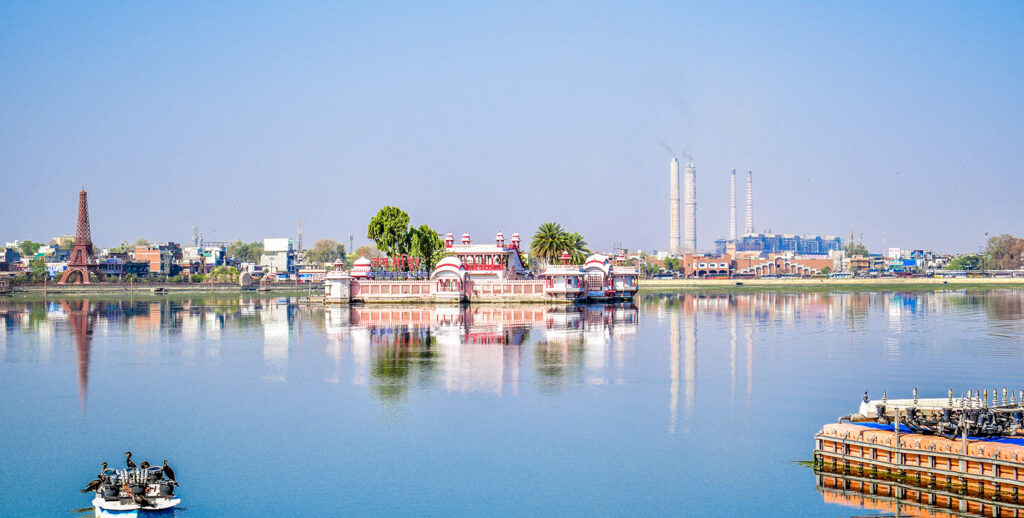
Rajasthan, known as the “Land of Kings,” is one of India’s most vibrant and culturally rich states. From majestic forts and palaces to folk music, dance, and colorful festivals, Rajasthan presents a diverse blend of history, tradition, and modern life. Each city in Rajasthan reflects a unique facet of this cultural identity—and Kota, in particular, offers a beautiful combination of historical significance, scenic beauty, and local art forms.
This article explores Rajasthan’s culture through the lens of the best places to visit in Kota, providing a thoughtful understanding of the tradeoffs, challenges, and considerations involved in balancing tourism with cultural preservation.
Kota: A Brief Introduction to a Culturally Rich City in Rajasthan
Often recognized as India’s education hub, Kota is more than just a city of coaching centers. It holds deep roots in Rajasthan’s royal history and offers a treasure trove of architecture, traditional crafts, and spiritual landmarks. Located on the banks of the Chambal River, Kota is home to centuries-old palaces, temples, and gardens, making it one of the best places in Rajasthan to experience authentic local culture.
Kota’s culture is influenced by the Hadoti region, blending Mewar and Rajput traditions with modern urban growth. Its cuisine, handicrafts, and heritage structures serve as a testament to its past while welcoming the modern traveler.
Key Factors That Impact the Best Places in Kota
When identifying the best places in Kota, several key cultural, historical, and environmental factors come into play
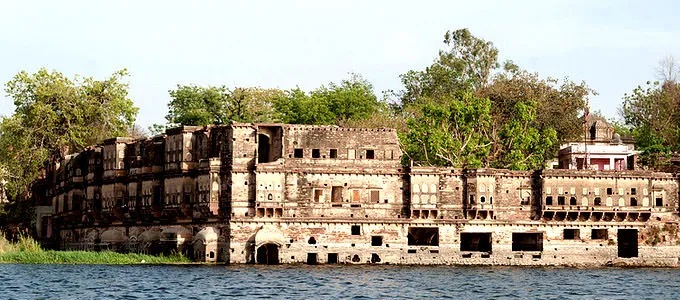
1. Historical Importance
Many of Kota’s iconic sites like the City Palace, Jagmandir Palace, and Garadia Mahadev Temple are rooted in history. These monuments showcase a mix of Rajput and Mughal architecture and offer insights into Rajasthan’s royal lineage.
Tradeoff: Maintaining historical integrity while promoting tourism is a challenge. Restoration projects must be balanced with the need for accessibility and modern infrastructure.
2. Cultural Preservation
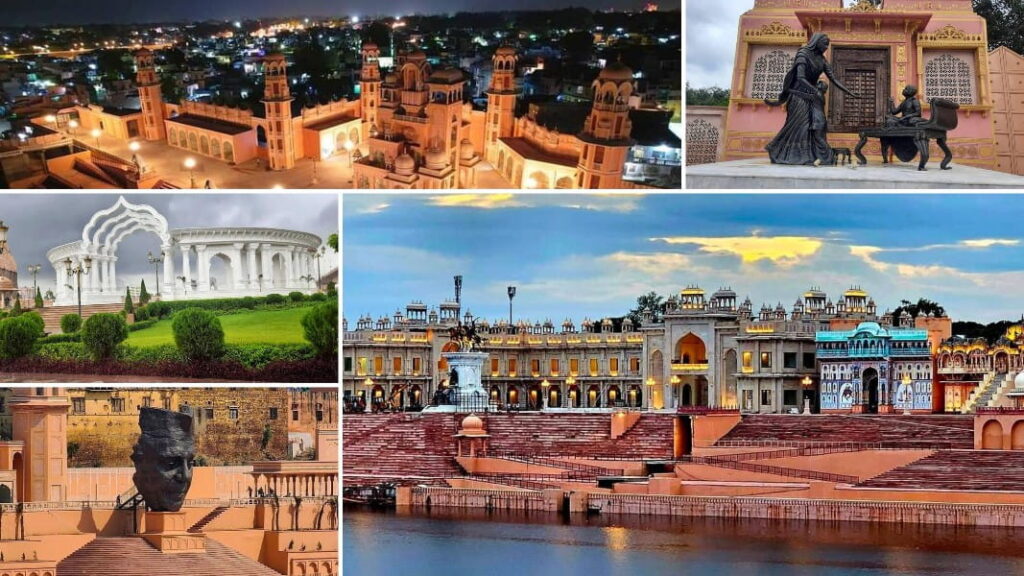
Kota is known for Kota Doria sarees, miniature paintings, and local festivals like Kota Dussehra. These elements play a key role in preserving Rajasthan’s artistic identity.
Challenge: Mass production and modern fashion trends can threaten traditional crafts. Supporting local artisans and promoting ethical tourism is crucial for sustaining these cultural treasures.
3. Environmental and Natural Sites

Places like Garadia Mahadev and Kishore Sagar Lake offer natural beauty and serenity. These scenic locations are often visited for both religious and recreational purposes.
Tradeoff: Increased footfall can lead to pollution and ecological damage. Sustainable tourism practices such as eco-friendly boating and waste management need to be prioritized.
4. Religious and Spiritual Significance
Temples such as the Khade Ganesh Ji Temple, Mathuradheesh Temple, and Godavari Dham reflect the spiritual side of Kota. These spots attract not just pilgrims, but also history enthusiasts and architecture lovers.
Consideration: Religious tourism must respect cultural sentiments while offering facilities for tourists. Noise pollution, crowd control, and preservation of temple art are common concerns.
Best Places in Kota to Explore Rajasthan’s Culture
Here is a list of best places in Kota that represent the heart of Rajasthan culture
1. City Palace and Fort Complex, Kota: A Window into Rajasthan’s Royal Heritage

Kota, a prominent city in Rajasthan, is known for its education sector, natural beauty, and deep-rooted cultural heritage. While Kota’s modern reputation as an academic hub is widely recognized, the city’s royal past is equally significant. Among the best places in Kota to visit, the City Palace and Fort Complex stands out as a true gem that reflects the grandeur, history, and architectural finesse of Rajasthan’s royal legacy.
This article delves into the cultural and historical relevance of the City Palace and Fort Complex, analyzing the key factors that contribute to its importance, the tradeoffs in tourism development, and the need for sustainable and respectful heritage preservation.
Brief Overview of City Palace and Fort Complex
Situated on the eastern bank of the Chambal River, the City Palace and Fort Complex in Kota is a sprawling architectural marvel. Built in the 17th century by the rulers of the Hada Rajput clan, it blends Mughal and Rajput architectural styles. The palace complex includes several courtyards, gardens, and inner palaces, as well as the Rao Madho Singh Museum, which showcases weapons, royal attire, artifacts, and miniature paintings.
This site is not just a historical monument but a living repository of Rajasthan’s royal culture, attracting tourists, researchers, and history enthusiasts from across the world.
Key Factors Impacting the City Palace and Fort Complex as a Tourist Destination
1. Architectural Grandeur and Historical Significance
The Palace’s design features ornate ceilings, painted walls, and intricately carved balconies that narrate stories of Rajasthan’s regal past. The museum adds educational value, making it a must-visit for cultural tourism.
Tradeoff: While renovation and upkeep are essential for safety and accessibility, excessive modernization could dilute the historical authenticity.
2. Cultural Heritage and Preservation
The Fort Complex plays a crucial role in preserving the legacy of Rajput bravery and lifestyle. Events and exhibitions held within the palace compound help keep traditional arts and narratives alive.
Challenge: Balancing cultural programming with crowd management during tourist seasons can be difficult, and there’s always a risk of commercialization overpowering cultural sensitivity.
3. Accessibility and Infrastructure
The location is easily reachable from the city center and provides necessary amenities like guided tours, local shops, and rest areas, making it a convenient stop for tourists.
Consideration: While better infrastructure improves visitor experience, care must be taken to preserve the surrounding heritage landscape.
4. Educational and Experiential Tourism
With its on-site museum and historical displays, the palace complex offers an educational experience, particularly for school groups, history buffs, and architecture students.
Challenges in Promoting City Palace and Fort Complex
Promoting the City Palace and Fort Complex as one of the best places in Kota to visit comes with its own set of challenges
1. Seasonal Tourism Impact
High footfall during peak seasons may lead to wear and tear, littering, and strain on site management.
2. Cultural Misinterpretation
Without well-trained guides or informative content, visitors may not grasp the true significance of the place.
3. Local Community Engagement
Ensuring that local communities benefit from tourism is vital. Jobs in tourism, guide training, and handicraft promotion can support this.
The Importance of Responsible Tourism in Heritage Preservation
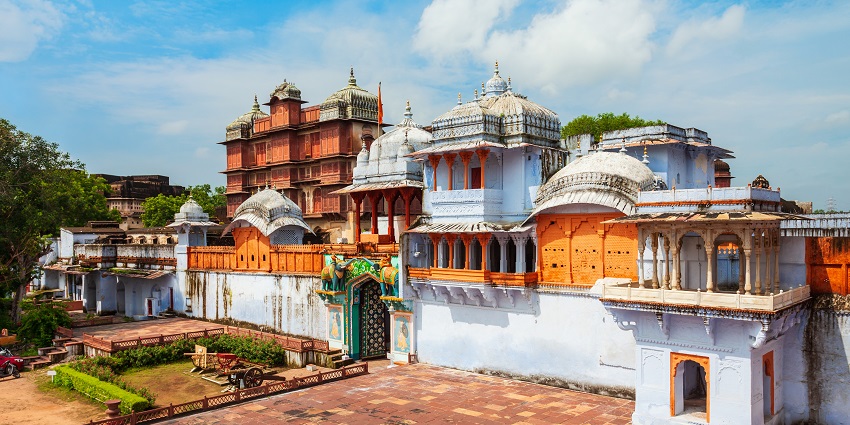
When making decisions about City Palace and Fort Complex, it’s important to understand that heritage sites are not just visual attractions—they are cultural legacies. Decisions involving site management, tourist regulations, and infrastructure development must consider long-term impacts
Environmentally Conscious Policies
Avoiding excessive lighting, ensuring proper waste disposal, and regulating the number of visitors can protect the site.
Cultural Respect
Encouraging tourists to behave respectfully and learn about the significance of the palace promotes a more meaningful experience.
Promotion of Local Art
Local artisans can be involved in selling traditional crafts within palace premises, boosting the local economy.
2. Garadia Mahadev Temple – A Sacred Gem Among the Best Places in Kota to Visit
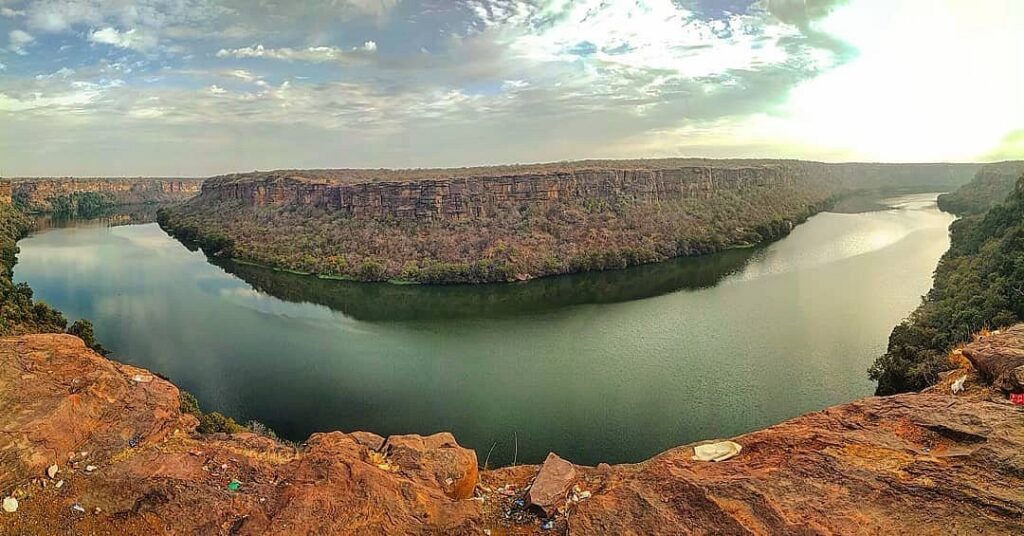
Introduction: Discovering Spiritual Beauty in Kota
Kota, a vibrant city located on the banks of the Chambal River in Rajasthan, is often celebrated for its educational institutions and cultural richness. However, beyond the city’s academic and industrial identity lies a treasure of spiritual and natural wonders. Among the best places in Kota to visit, the Garadia Mahadev Temple stands out for its divine atmosphere and breathtaking panoramic views of the Chambal Gorge.
This article offers a comprehensive look at Garadia Mahadev Temple—from its cultural and geographical significance to the challenges and opportunities it presents as a heritage and tourist site.
Overview of Garadia Mahadev Temple
Located around 25 kilometers from Kota city, Garadia Mahadev Temple is a small yet spiritually significant shrine dedicated to Lord Shiva. Nestled on a cliff overlooking the winding Chambal River, the temple offers a mesmerizing view of nature that blends serenity with divinity. The temple is especially popular among pilgrims, nature lovers, photographers, and adventure seekers.
It is often called the Grand Canyon of India due to its striking resemblance to famous natural landscapes, making it one of the best places in Kota to visit for those seeking peace and natural beauty.
Key Factors That Impact Garadia Mahadev Temple’s Significance
1. Spiritual and Cultural Importance
The temple holds deep spiritual value for devotees of Lord Shiva. Pilgrims visit the site to offer prayers and seek blessings, especially during Mahashivratri and other Hindu festivals.
Tradeoff: Increasing tourist activity can disturb the peaceful ambiance that is essential to its spiritual identity.
2. Natural Scenic Beauty
Garadia Mahadev Temple offers one of the most iconic views of the Chambal River, surrounded by rugged cliffs and lush greenery. It’s a prime spot for landscape photography and nature exploration.
Challenge: High tourist footfall may risk harming the fragile ecosystem around the cliff and riverbank if not managed sustainably.
3. Accessibility and Infrastructure
The site is accessible by road, though the final stretch involves a rough terrain that is best suited for private vehicles or local taxis. Lack of public transportation and limited on-site facilities like toilets or eateries can affect the visitor experience.
Consideration: While improving infrastructure can enhance tourism, construction must be eco-sensitive to preserve the site’s natural charm.
4. Adventure and Eco-Tourism
The temple has become popular among eco-tourists and trekkers due to its offbeat location and peaceful environment. It also appeals to photographers and vloggers for its dramatic river bend views.
Challenges in Developing Garadia Mahadev Temple as a Tourist Destination
As one of the best places in Kota to visit, Garadia Mahadev Temple presents several challenges that need to be addressed carefully
Lack of Facilities
There are minimal amenities such as drinking water, washrooms, or medical assistance at the site, which can affect elderly and family visitors.
Environmental Concerns
Littering, soil erosion, and disturbance to wildlife can result from unregulated tourism.
Safety Risks
The temple is located near steep cliffs, and there are no protective railings in some areas, making it potentially hazardous for tourists, especially during monsoons.
Over-Tourism
Viral social media posts and travel videos have increased the site’s popularity, sometimes leading to overcrowding and strain on the environment.
The Importance of Sustainable Tourism and Responsible Development
When considering the future of Garadia Mahadev Temple as one of the best places in Kota to visit, it’s essential to implement thoughtful and sustainable practices
Eco-Friendly Infrastructure
Introducing solar-powered lighting, eco-toilets, and proper waste management systems can help maintain environmental balance.
Local Community Involvement
Engaging local villagers in tourism—such as offering guide services or selling traditional crafts—can support the economy while ensuring respectful tourism.
Visitor Education
Displaying informative signboards about the temple’s significance, rules, and ecological importance can promote responsible behavior among tourists.
Controlled Access
Limiting visitor numbers during peak seasons and introducing time slots can reduce pressure on the site.
3. Kota Barrage and Chambal Garden – A Harmony of Utility and Leisure Among the Best Places in Kota to Visit
Introduction: Uniting Nature, Engineering, and Recreation
Kota, situated along the banks of the Chambal River in Rajasthan, is widely known for its academic institutions and cultural legacy. However, the city also offers scenic beauty, architectural marvels, and relaxing recreational spots. Among the best places in Kota to visit, two standout attractions are the Kota Barrage and the adjacent Chambal Garden. Together, they form a unique blend of utility and leisure, offering locals and tourists an experience that connects nature with human engineering.
This article explores the importance of Kota Barrage and Chambal Garden, how they contribute to tourism and urban life, and the challenges and trade-offs involved in preserving them as leading destinations in Kota.
Kota Barrage: A Lifeline of the Region
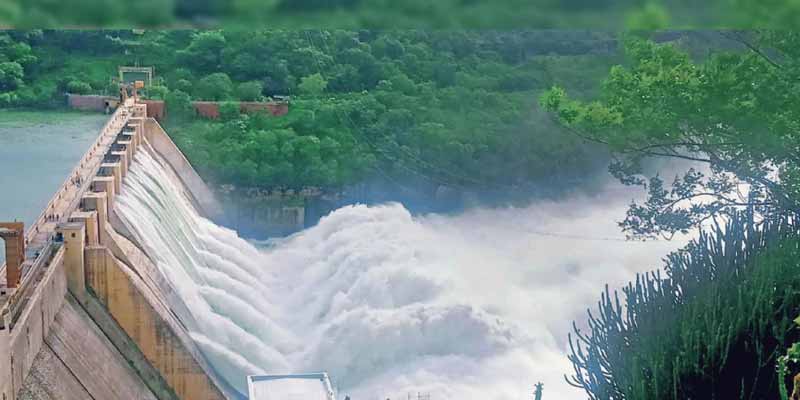
Overview
Kota Barrage is a major water diversion structure on the Chambal River and plays a key role in irrigation and water management across Rajasthan. Built as part of the Chambal Valley Project, the barrage regulates water distribution to agricultural fields in Kota and nearby districts, supporting the region’s economy and food production.
Tourist Perspective
While primarily a functional structure, the Kota Barrage also attracts a large number of visitors due to its picturesque setting and the dramatic sight of water gushing through its gates, especially during the monsoon season. It offers a peaceful view of the flowing Chambal River, often accompanied by birds and cool breezes.
Tradeoffs and Challenges
- Balancing Utility and Safety: The site is not a dedicated tourist area, and during periods of high water release, safety concerns emerge. Tourists need to be cautious, and local authorities must install clear warning signs and barriers.
- Environmental Impact: While the barrage supports irrigation, it can alter the natural flow of the river, impacting aquatic ecosystems downstream.
- Access and Infrastructure: Although it’s located close to the city center, the area lacks dedicated visitor facilities such as parking, restrooms, or proper viewing platforms, which could enhance the overall experience.
Chambal Garden: A Peaceful Escape in Kota
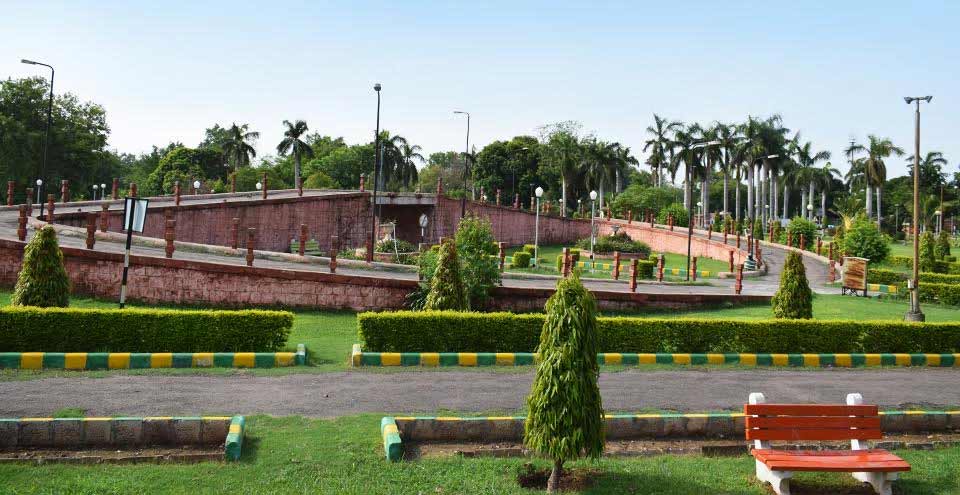
Overview
Located right next to the Kota Barrage, Chambal Garden is one of the most relaxing and family-friendly destinations in the city. Spread over a vast area along the riverbank, the garden features lush green lawns, flower beds, shaded walkways, and a tranquil environment. It is ideal for picnics, morning walks, and evening outings.
Key Attractions
Photography & Nature Viewing: The lush greenery and river views offer great photography opportunities.
Toy Train Ride: A small train ride within the garden is especially loved by children.
Boating Facility: Depending on the season and water levels, tourists can enjoy boat rides in a secured area of the Chambal River.
Crocodile Enclosure: A small yet interesting section of the garden features a fenced area where crocodiles can be viewed from a safe distance.
Challenges and Considerations
Despite their popularity, there are key challenges to address:
- Lack of Maintenance: Both the barrage and the garden require regular maintenance to remain clean, safe, and inviting.
- Overcrowding During Peak Season: During holidays or festivals, the sites can become crowded, leading to littering and disturbance.
- Environmental Responsibility: Ensuring that tourism does not disturb the local ecology, especially the riverbank ecosystem, is essential.
Recommendations for Sustainable Development
To maintain and enhance these areas as the best places in Kota to visit, sustainable tourism and urban planning strategies are essential:
- Eco-Friendly Amenities: Install solar lighting, water stations, and waste disposal units in the garden.
- Clear Signage and Safety Guidelines: Informative boards at the barrage about its function, history, and safety instructions can boost educational tourism.
- Community Involvement: Encourage local schools, NGOs, and residents to participate in clean-up drives and awareness events.
- Regular Monitoring: Introduce patrols and monitoring systems to manage crowd control and ensure safety during high water release periods.
- Accessibility Improvements: Better parking, pathways, and public transport access can make the sites more inclusive.
4. Kishore Sagar Lake & Jagmandir Palace – A Blend of Royalty and Tranquility Among the Best Places in Kota to Visit
Introduction: Kota’s Iconic Lakeside Marvel
Kota, a city known for its architectural heritage, educational institutions, and rich Rajasthani culture, also offers some breathtaking natural and man-made attractions. Among these, Kishore Sagar Lake and Jagmandir Palace stand out as one of the best places in Kota to visit, offering both historical charm and serene beauty.
This article explores the cultural, aesthetic, and functional importance of these landmarks while discussing the challenges and trade-offs involved in maintaining them as tourist attractions.
Kishore Sagar Lake – An Ancient Water Reservoir with Scenic Value
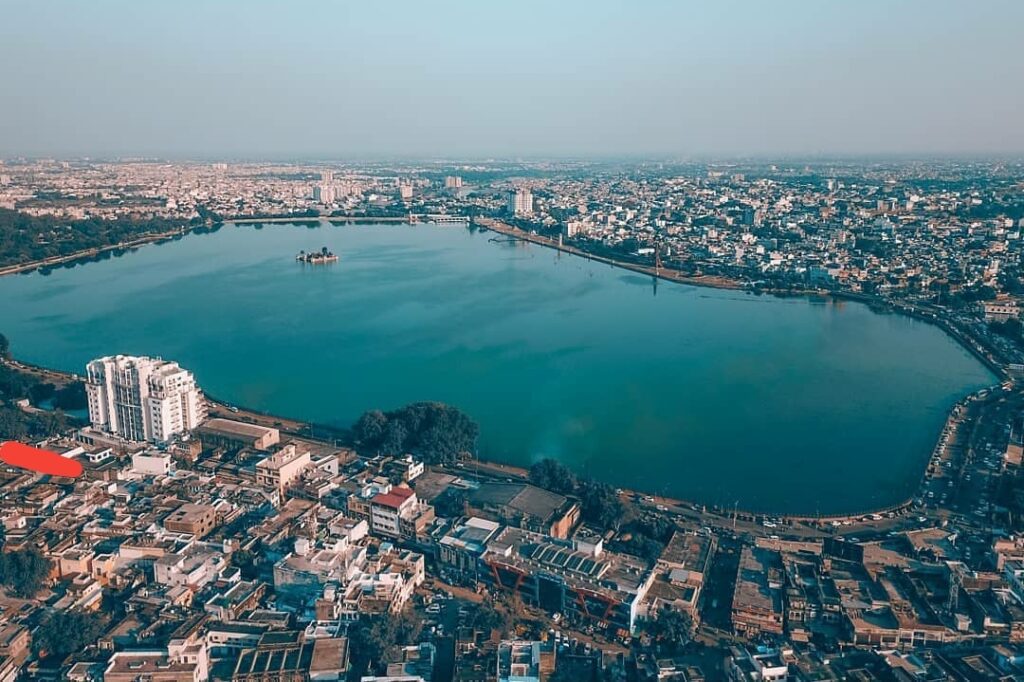
Historical Background
Kishore Sagar Lake dates back to the 14th century and was constructed by Prince Dher Deh of Bundi. Originally a man-made water body, the lake has grown to become a vital part of Kota’s landscape, not only enhancing the city’s beauty but also supporting its ecological and urban balance.
Tourism & Recreation
With its calm waters and scenic backdrop, the lake serves as a tranquil getaway for tourists and locals alike. Visitors often enjoy boating, evening strolls, and photography by the lakeside. The lake becomes especially beautiful at sunset when the waters reflect the city lights and the silhouette of Jagmandir Palace.
Jagmandir Palace – A Royal Retreat on Water
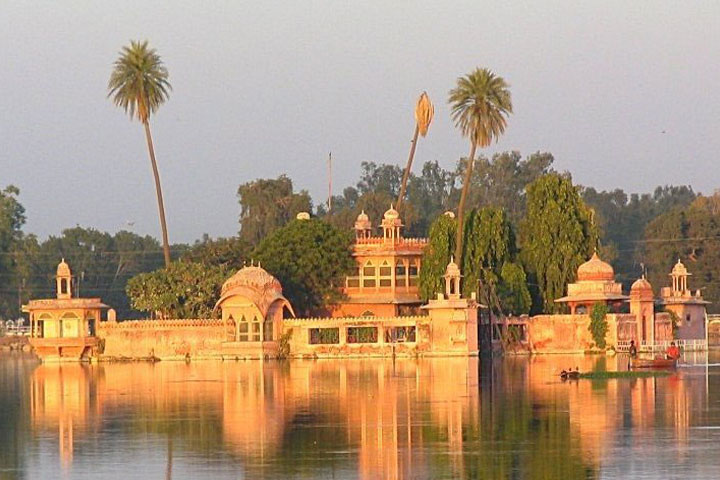
Architectural Significance
Located in the middle of Kishore Sagar Lake, Jagmandir Palace is an elegant structure made of red sandstone. Built in the 18th century by one of Kota’s queens, this palace served as a summer retreat for the royal family. Its Mughal-Rajput style architecture, set against the tranquil lake waters, makes it a visually captivating spot.
Current Use and Accessibility
Although not always open to the public for interior tours, the palace can be admired from a distance during boat rides or lakeside visits. Occasionally, the site is used for cultural events and photography shoots, adding to its relevance in the modern tourism context.
Importance in Kota’s Cultural and Tourism Landscape
Kishore Sagar Lake and Jagmandir Palace are not just historic monuments but symbols of Kota’s royal heritage. As such, they are vital to the city’s image and reputation as a cultural destination. Their location—near the bustling city center and adjacent to other key attractions like the Seven Wonders Park—makes them even more appealing to tourists.
These landmarks contribute to:
- Cultural Preservation: Promoting awareness about Kota’s history and architectural style.
- Eco-Tourism: Encouraging responsible tourism that connects people with nature and heritage.
- Local Economy: Supporting boat operators, food vendors, and guides who cater to tourists in the area.
Challenges and Tradeoffs
While the site offers much to admire, there are several challenges that affect its maintenance and long-term sustainability:
Environmental Concerns
- Water Pollution: Due to urban runoff and tourism-related waste, maintaining water quality in Kishore Sagar Lake is a growing concern.
- Ecosystem Disturbance: Increased boating and human activity may disturb aquatic and bird life in the area.
Infrastructure vs. Aesthetic Balance
- Urban Development: The lake’s surroundings are seeing rapid urban development. While this boosts accessibility, it can also lead to overcrowding and visual pollution.
- Preserving Heritage: Upgrades like lighting, paths, or boating stations need to balance tourist convenience with the preservation of the site’s original look and feel.
Maintenance & Funding
- Upkeep: Regular maintenance of the palace’s exterior, the boating facilities, and the lake itself requires ongoing funding and efficient city management.
- Limited Access: Since Jagmandir Palace is not fully open to the public, many visitors feel the experience is incomplete. However, increasing access could compromise the structure’s preservation.
The Role of Community and Policy in Preservation
To ensure Kishore Sagar Lake and Jagmandir Palace remain among the best places in Kota to visit, both the government and local communities must work together on sustainable solutions:
- Public Awareness: Educating visitors on cleanliness and eco-friendly practices around the lake.
- Heritage Tourism Programs: Integrating the site into city-wide heritage tours and school programs.
- Infrastructure Planning: Adding amenities like viewing platforms, proper lighting, clean restrooms, and seating areas without damaging the environment or heritage.
- Cultural Events: Hosting light and sound shows, evening cultural performances, or art exhibitions on the lakefront to revive public interest.
5. Kaithoon Village – Preserving Heritage Through Threads Among the Best Places in Kota to Visit
Introduction: A Weaving Legacy in Rural Rajasthan
Nestled about 15 kilometers from the city of Kota, Kaithoon Village is a lesser-known yet culturally significant destination. While Kota is largely recognized for its coaching centers and engineering institutes, Kaithoon shines with its quiet contribution to India’s handloom heritage — it is the birthplace of the world-famous Kota Doria sarees. For travelers seeking cultural authenticity and rural craftsmanship, Kaithoon Village is one of the best places in Kota to visit.
This article explores the unique offerings of Kaithoon, the factors that affect its appeal and sustainability, and the tradeoffs involved in promoting it as a tourist destination.
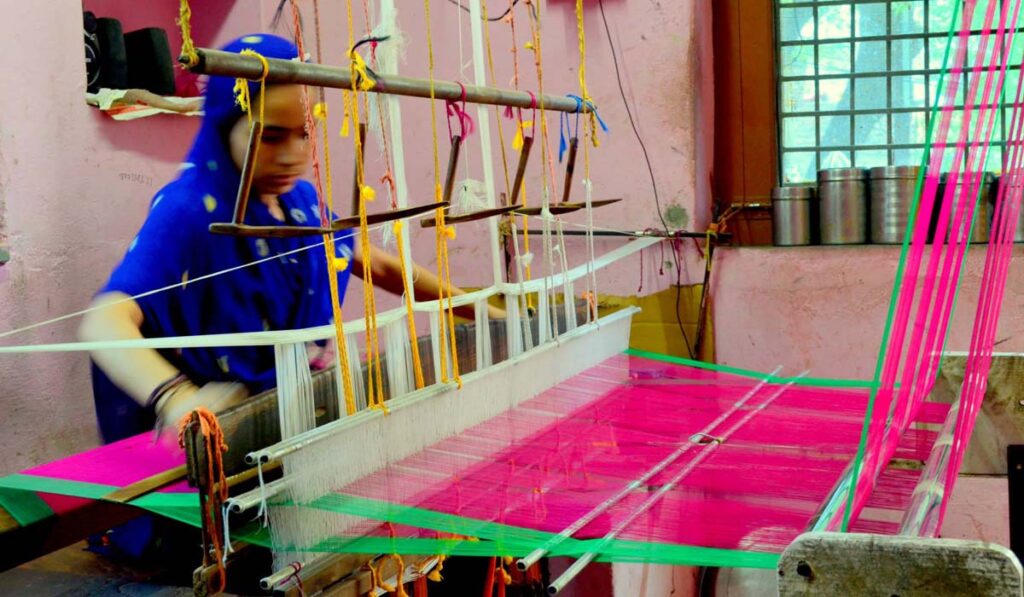

The Cultural Significance of Kaithoon
Kaithoon is not just a village; it is a living museum of artistry, where centuries-old weaving techniques are still practiced by local artisans, many of whom are women. The village is synonymous with Kota Doria, a lightweight, airy fabric known for its delicate checks and translucent texture. These sarees are made on traditional pit looms, often inside the homes of the weavers.
The weaving community, primarily consisting of Muslim and Hindu families, has carried this legacy forward for generations, making the village an important cultural site within Rajasthan.
Why Kaithoon is Among the Best Places in Kota to Visit
Authentic Experiences
- Visitors can observe the intricate weaving process firsthand.
- Many artisans are open to demonstrating their skills, offering a learning opportunity rarely found in urban craft shops.
Support Local Economy
- Purchasing directly from the weavers ensures fair wages and encourages sustainable livelihoods.
- Tourists often find better prices and more authentic products than in city showrooms.
Cultural Immersion
- Unlike commercial tourist spots, Kaithoon offers an immersive rural experience.
- The calm atmosphere, mud houses, and slow pace give travelers a break from the fast city life.
6. Seven Wonders Park – A Unique Urban Attraction Among the Best Places in Kota to Visit
Introduction: A Blend of Global Marvels in Rajasthan
Located along the serene banks of the Kishore Sagar Lake, Seven Wonders Park in Kota is a remarkable public space that offers a rare experience—miniature replicas of the world’s seven architectural marvels in one location. This creative and engaging park has become one of the best places in Kota to visit, appealing to both tourists and locals who seek recreation, photography, and cultural appreciation in a compact urban setting.
With its unique concept, the park draws attention not just for leisure but also for educational and aesthetic value, particularly among young travelers and families.
Overview of the Seven Wonders Replicas
The park features scaled-down models of:
- Eiffel Tower (France)
- Statue of Liberty (USA)
- Christ the Redeemer (Brazil)
- Leaning Tower of Pisa (Italy)
- Taj Mahal (India)
- Great Pyramid of Giza (Egypt)
- Colosseum (Italy)
Each structure is thoughtfully designed to reflect the iconic characteristics of the original, offering a world-tour-like experience in one place.
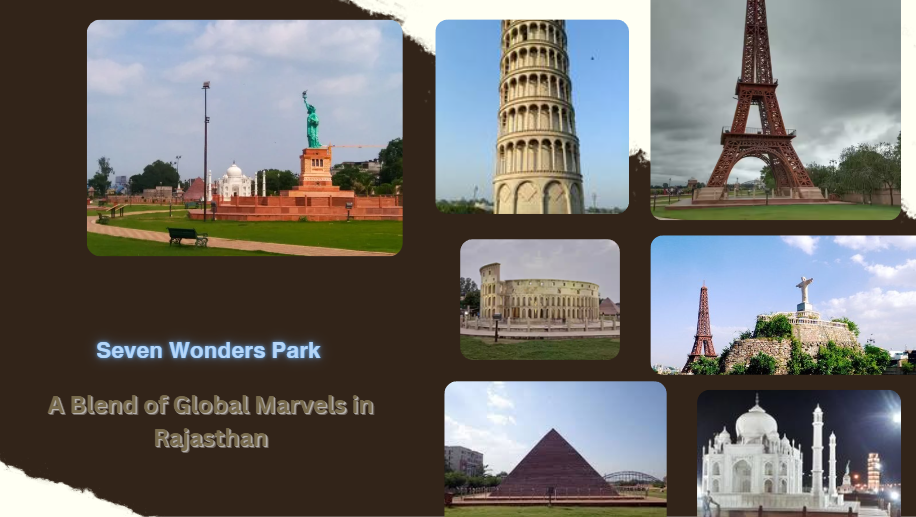
Why Seven Wonders Park is Among the Best Places in Kota to Visit
Educational Value
- Offers a learning experience for students and young visitors about global architecture and cultural landmarks.
- Helps instill curiosity and appreciation for global heritage without needing international travel.
Family-Friendly
- Safe and scenic space ideal for evening strolls, picnics, and casual outings.
- The park features well-maintained walking paths and seating areas.
Photography and Social Media Appeal
- The unique backdrop makes it a hotspot for photography enthusiasts and influencers.
- Especially popular during evening hours with the structures illuminated.
Central Location
- Easily accessible from major parts of the city.
- Proximity to Kishore Sagar Lake and Jagmandir Palace adds to its appeal as a sightseeing package.
Impact on Local Tourism and Culture
The park plays a significant role in shaping Kota’s evolving tourism identity:
- Kota, traditionally known for coaching centers, is now gaining recognition as a family-friendly tourist destination.
- The park complements nearby attractions like Chambal Garden, City Palace, and Garadia Mahadev, helping build a more holistic visitor experience.
- Promotes a recreational culture in the city, encouraging locals to engage in outdoor activities.
7. Khade Ganesh Ji Temple – A Sacred Landmark
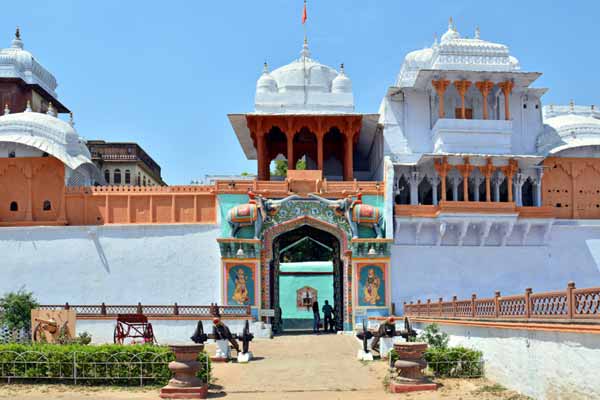
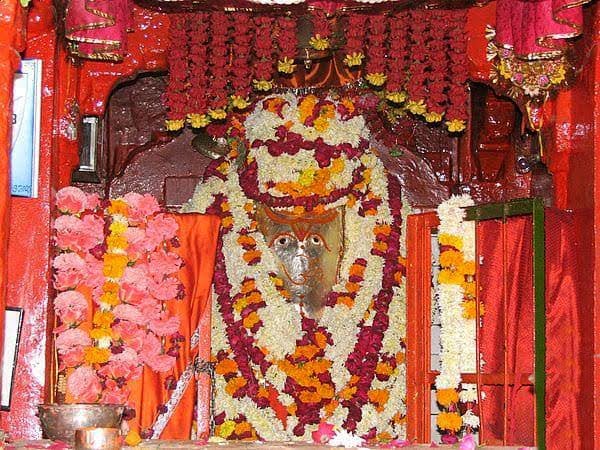
Introduction: A Spiritual Gem of Kota
Located on the banks of the Chambal River, Khade Ganesh Ji Temple is one of the most spiritually significant and culturally admired sites in Kota, Rajasthan. This revered temple is dedicated to Lord Ganesha and is unique because of the standing (khade) idol of the deity—unlike the more commonly seen seated representations. This distinct feature draws devotees, tourists, and architecture lovers, making it one of the best places in Kota to visit.
Beyond religious significance, the temple offers picturesque views of the river and a tranquil atmosphere for visitors seeking peace, reflection, and a deeper understanding of Rajasthan’s cultural roots.
Cultural and Spiritual Significance
Khade Ganesh Ji Temple holds immense religious value among locals, especially during Ganesh Chaturthi, when thousands gather to celebrate and offer prayers. The temple is considered a wish-fulfilling site, where devotees pray for success, prosperity, and new beginnings.
The temple is also one of the rare shrines where Lord Ganesha is worshipped in a standing posture, symbolizing readiness, strength, and forward movement in life.
Why It’s One of the Best Places in Kota to Visit
- Spiritual Experience: The temple provides a deeply spiritual ambiance that appeals to both devotees and tourists.
- Serene Environment: Surrounded by greenery and close to the Chambal River, it’s ideal for peaceful reflection.
- Cultural Connection: Offers a chance to experience local traditions, rituals, and community gatherings.
- Accessibility: It is located just a few kilometers from the city center, making it convenient for day trips or short visits.
Opportunities for Sustainable Tourism
With thoughtful planning, the temple can continue to flourish as both a spiritual hub and a tourist destination. Some potential improvements include:
- Information Boards: Adding history and significance details can enhance the experience for non-local visitors.
- Cleanliness Drives: Regular community cleanups and waste management systems can help maintain its pristine environment.
- Festival Management: Better crowd management and amenities during Ganesh Chaturthi can improve visitor comfort and reduce stress on local resources.